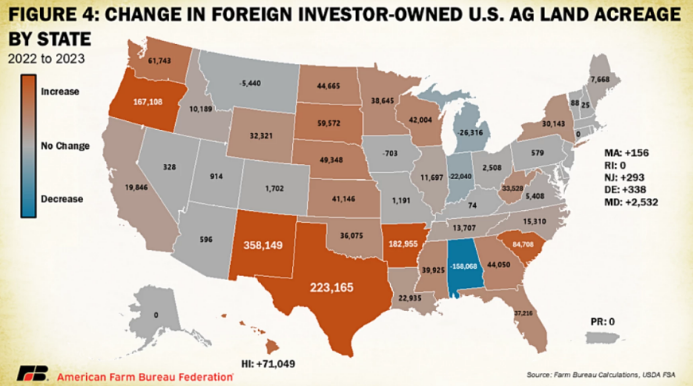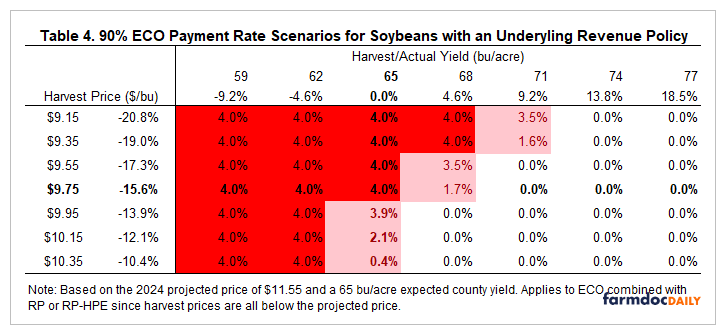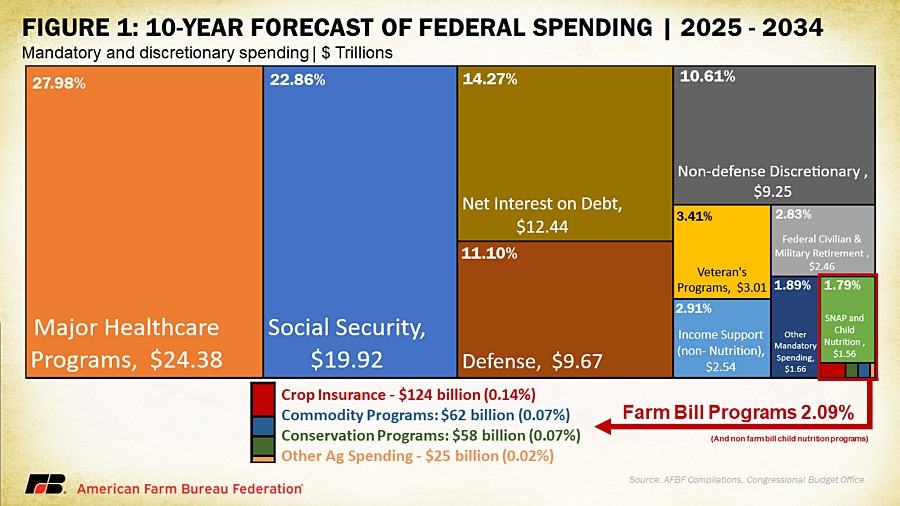By Jonathan Coppess and Nick Paulson et.al
Among other annual milestones, the month of May is home to Mother’s Day. On May 8, 1914, Congress declared that the second Sunday in May would be officially recognized as Mother’s Day and proclaimed America’s mothers the “greatest source of the country’s strength and inspiration” (P.R. 63-25, 63 H.J. Res. 263, May 8, 1914). Rooted in the post-Civil War era women’s movement, Anna M. Jarvis initiated Mother’s Day in May 1907 to memorialize her mother Ann’s activism, reviving a 30-year tradition started earlier by the poet Julia Ward Howe in 1870 in Boston (National Women’s History Alliance; Stonehill, April 1, 2024). On the 110th official Mother’s Day, we express our great appreciation for the mothers in our lives. We do not intend to tarnish the tribute with a discussion of farm bill matters but trust that moms will appreciate there is a job to be done. To that end, this article reviews the reference price components of the recent farm bill proposals, adding to the previous discussion (farmdoc daily, May 7, 2024).
Background
The first sprouts of a possible 2024 Farm Bill reauthorization appeared on May 1, 2024. Chairwoman Debbie Stabenow, chair of the Senate Agriculture, Nutrition, and Forestry Committee, released multiple documents that propose a direction for Farm Bill reauthorization, including a 94-page, detailed section-by-section legislative summary (Senate Committee on Agriculture, Nutrition, and Forestry, May 1, 2024 and Section-by-Section). That same day, Chairman Glenn Thompson (R-PA), chair of the House Agriculture Committee, released a 5-page, high level summary of a proposal for Farm Bill reauthorization (House Agriculture Committee, May 1, 2024 and Summary). The competing proposals from the committee chairs differ not only in the level of detail but also in specific policy changes, notably the reference prices used as the payment threshold for Price Loss Coverage (PLC) program payments.
A demand to raise reference prices has been one of the biggest contributors to the yearlong impasse on Farm Bill reauthorization. The House proposal indicates increasing support through PLC and the Agriculture Risk Coverage (ARC) program but does not detail how, including none as to the level of increase for reference prices. The Senate proposal includes an increase to the ARC guarantee from 86% of the benchmark to 88% and a 5% increase in the statutory reference price for seed cotton, rice, and peanuts. Notably, this constitutes the first and so-far only specific proposal to increase reference prices (which crops and by how much); that the proposed increase is limited to only those crops grown in the South is more notable still. The discussion that follows focuses on the proposed changes to reference prices and a future article will discuss the proposed changes to ARC.
Discussion
The program crop’s reference price is the threshold for triggering PLC payments on the base acres of that program crop. If the Marketing Year Average (MYA) price for the program crop is below the effective reference price in a year, PLC issues payments on 85% of the base acres for that program crop. The payment rate is calculated as the deficiency, or difference between the effective reference price and the MYA. Figure 1a illustrates PLC payment rates for the major program crops whose price is denoted on a per bushel basis (corn, soybeans, wheat, and sorghum) since PLC was first enacted in the 2014 Farm Bill. Figure 1b illustrates the payment rates for the major program crops whose price is denoted on a per pound basis (seed cotton, peanuts, and long grain rice). Both figures use the program data reported by USDA’s Farm Service Agency (FSA) (USDA-FSA, ARC/PLC Program Data).


Likely feeding the demand for increasing reference prices, none of these crops will receive PLC payments for the 2022 and 2023 crop and program years because all MYA prices are above the reference prices. Moreover, the 2022 program year represented the first in which base acres of peanuts and long grain rice did not receive payments. For additional information on operation of PLC since it was first enacted, the data visualizations created as part of the Policy Design Lab project have been updated for 2014 to 2022. (See: https://policydesignlab.ncsa.illinois.edu/title1.)
The proposal in the Senate includes increasing the statutory reference price only for seed cotton, rice, and peanuts by 5%. Figures 2a and 2b illustrate the potential payment rates using the February 2024 Congressional Budget Office MYA price projections through 2029 (CBO Baseline Projections, February 2024). A Farm Bill reauthorized in 2024 would be scheduled to expire in 2029. Note that CBO reports only an all-rice MYA in its baseline and the long grain rice MYA used in Figure 2b is based on the historical average difference between the MYA price for all rice and long grain rice. Finally, the payment rates for corn in Figure 1a are due to the provision added by the 2018 Farm Bill that increases the reference price when 85% of the five-year Olympic moving average of recent MYA prices is higher. This provision applies to all program crops and recent high crop prices are expected to trigger the provision for many (see, farmdoc daily, October 5, 2023). CBO’s February price projections, however, would result in payment rates only for corn in these years.


In addition to the reference prices, the proposal in the Senate includes adding a payment band equal to 20% of the effective reference price. Under current law, the payment rate for PLC starts at the effective reference price and ends at the loan rate and this would limit it to 20% of the effective reference price. Table 1 compares the projected payment rates using the February CBO MYA price projections and the proposed payment rate cap at 20% of the effective reference price. If the CBO price projections were realized, the payment band would not impact payment rates but note that this is not the same as impacting the CBO scoring projections.

Concluding Thoughts
Last week, the chairs of the Congressional Agricultural Committees released competing proposals for reauthorizing the Farm Bill. Reviewed here, the proposal in the Senate includes a 5% increase in reference prices for the Southern crops: seed cotton, rice, and peanuts. If enacted, it would exacerbate the imbalance in benefits from the Price Loss Coverage program for farmers in different regions of the country. By comparison, the proposal in the House continues the practice of avoiding specifics for this policy request (i.e., which crops and what reference prices).
The imbalance has political implications but also consequences on the ground. Often overlooked, or conveniently avoided, ARC and PLC are decoupled programs. Farmers are not required to plant the crop for which the payment is received. The payments from these programs are not directly linked to the cost of production or price risks for those crops and farmers can receive payments on base acres while planting, harvesting, and marketing other crops. Much about the policy design of PLC is outdated, beginning with the crop-by-crop components coupled with a fixed price-based payment threshold. Those imbalances are magnified by a lack of any revisions to base acres that better align payments with more current cropping systems. Designing a system that does not influence, or distort, acreage and production decisions of farmers while also providing effective risk protection is an ongoing challenge.
Progress on the Farm Bill reauthorization requires good faith negotiations which need a starting point. With the competing proposals from committee chairs last week, those negotiations may be able to make progress. If so, Farm Bill reauthorization has finally sprouted this May, improving the odds it can be achieved in this Congress.
Source : illinois.edu